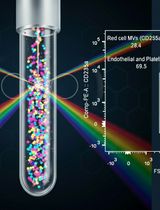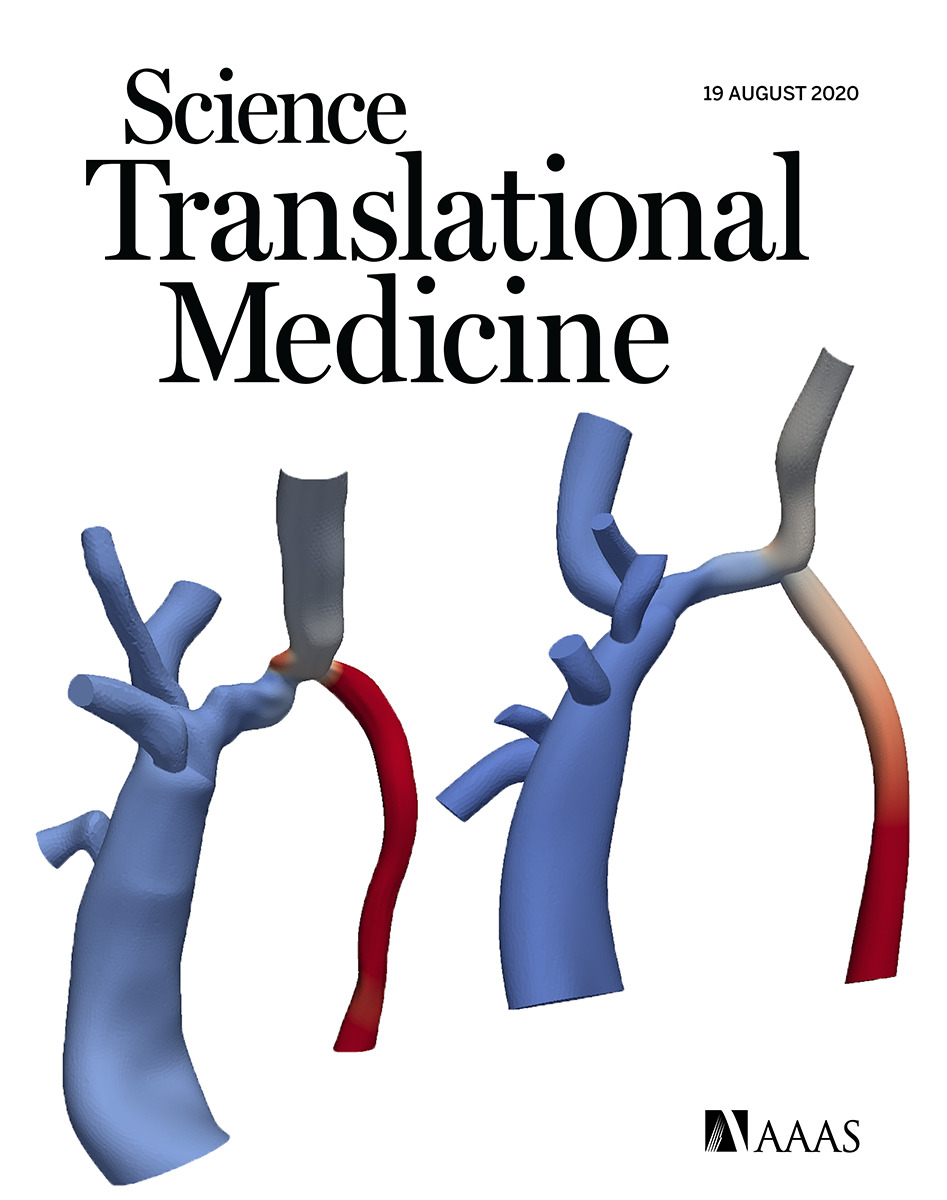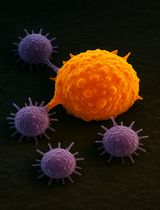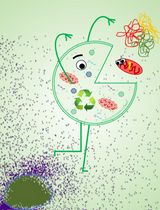- EN - English
- CN - 中文
Suppression of Human Dendritic Cells by Regulatory T Cells
调节性 T 细胞抑制人树突状细胞
(*contributed equally to this work) 发布: 2021年11月05日第11卷第21期 DOI: 10.21769/BioProtoc.4217 浏览次数: 4517
评审: Scott McCombSaskia F. ErttmannAnonymous reviewer(s)

相关实验方案

外周血中细胞外囊泡的分离与分析方法:红细胞、内皮细胞及血小板来源的细胞外囊泡
Bhawani Yasassri Alvitigala [...] Lallindra Viranjan Gooneratne
2025年11月05日 1324 阅读
Abstract
Regulatory T cells (Tregs) suppress immune responses via a variety of mechanisms and can be used as a cellular therapy to induce tolerance. The function of Tregs is commonly assessed in vitro using assays that measure suppression of effector T cell proliferation and/or cytokine production. However, Tregs can also suppress the function of antigen presenting cells, creating a need for methodology to routinely measure this aspect of their function. This protocol describes a method to measure human Treg-mediated suppression of CD80 and CD86 expression on mature, monocyte-derived dendritic cells. Representative data show suppression mediated by polyclonal Tregs as well as antigen-specific Tregs generated using chimeric antigen receptor (CAR) technology. This method can be used in parallel to T cell suppression assays to measure the functional activity of human Tregs.
Keywords: Regulatory T cells (调节性T细胞)Background
Regulatory T cells (Tregs) are immunosuppressive cells that play a fundamental role in maintaining peripheral tolerance. Tregs inhibit the action of many immune cells, including effector T cells and antigen presenting cells (APC), via cell contact-dependent and contact-independent mechanisms. The suppressive function of Tregs is typically assessed in vitro by measuring their ability to inhibit the proliferation of polyclonally stimulated T cells. However, methods to measure how Tregs suppress APCs are limited.
One strategy Tregs use to inhibit the function of APCs is the removal of co-stimulatory molecules from the APC, thereby reducing their ability to stimulate effector T cells. Tregs achieve this by expressing CTLA-4, which binds CD80 and CD86 with a high affinity and allows the Treg to physically remove these molecules from the APC cell surface (Walker and Sansom, 2011). We have also previously reported the ability of human Tregs to suppress the expression of co-stimulatory molecules on both immature and mature monocyte-derived DCs (moDCs) (Wang et al., 2011).
This protocol describes a method to test Treg-mediated suppression of CD80 and CD86 and is modified from a previously published mouse-based protocol (Onishi et al., 2008). Our protocol focuses on the ability of human Tregs to suppress the expression of CD80 and CD86 by moDCs. In this assay, polyclonal Tregs transduced with a truncated nerve growth factor receptor (ΔNGFR) reporter can reduce CD80 and CD86 expression in moDCs. Furthermore, when using HLA-A2+ target moDCs, antigen-specific Tregs expressing an HLA-A2-specific chimeric antigen receptor (CAR) are more potent than polyclonal Tregs (Dawson et al., 2020; Fung et al., 2021).
Materials and Reagents
Materials
5 ml polystyrene round-bottom tubes (Corning, catalog number: 352052)
TC-coated 6-well plates (Corning, catalog number: 353502)
TC-coated 12-well plates (Corning, catalog number: 353503)
96-well U- and V-bottom plates (Corning, catalog numbers: 353077, 3894)
1.5 ml microcentrifuge tubes (Fisher Scientific, catalog number: 229442)
15 ml and 50 ml conical tubes (Corning, catalog numbers: 352096, 352070)
Sterile 1 ml or 3 ml syringe (BD, catalog numbers: 309628, 309657)
Media and Buffers
LymphoprepTM (STEMCELL Technologies, catalog number: 07801)
Dulbecco’s Phosphate Buffered Saline (DPBS; Gibco, catalog number: 14190), 1×
X-VIVO 15 (Lonza, catalog number: BEBP02-054Q)
Human serum (Wisent Bio Products, catalog number: 022210)
Penicillin/streptomycin (Gibco, catalog number: 15140-122)
GlutaMAX (Gibco, catalog number: 35050-061)
Sodium pyruvate (Gibco, catalog number: 11360-070)
Fetal bovine serum (Gibco, catalog number: 12483020)
Ethylenediaminetetraacetic acid solution (EDTA) (Sigma-Aldrich, catalog number: 03690)
EasySep Buffer (see Recipes)
Dendritic Cell Medium (see Recipes)
Reagents
Stericup-GP Sterile Vacuum Filtration System (Millipore, catalog number: SCGPU05RE), 500 ml
EasySep Human CD14 Positive Selection Kit II (STEMCELL Technologies, catalog number: 17858)
Acridine Orange/Propidium Iodide (AO/PI; Nexcelom, catalog number: NEX-CS201065ML)
Cytokines
Recombinant human granulocyte-macrophage colony-stimulating factor (GM-CSF) (STEMCELL Technologies, catalog number: 78015), 20 μg/ml
Recombinant human interleukin (IL)-4 (STEMCELL Technologies, catalog number: 78045), 20 μg/ml
Recombinant human tumour necrosis factor (TNF)-α (eBioscience, catalog number: 14-8329-63), 20 μg/ml
Prostaglandin E2 (PGE2) (Tocris, catalog number: 2296),100 mM
Recombinant human IL-1β (STEMCELL Technologies, catalog number: 78041), 20 μg/ml
Recombinant human IL-6 (STEMCELL Technologies, catalog number: 78148), 20 μg/ml
Recombinant human interferon (IFN)-γ (eBioscience, catalog number: 14-8319-80), 20 μg/ml
Recombinant human IL-2 (Proleukin) (Novartis, DIN# 02130181)
Antibodies
Fc Receptor Binding Inhibitor Polyclonal Antibody (eBioscience, catalog number: 14-9161-73)
Fixable Viability Dye (FVD) (eBioscience, catalog number: 65-0865-18)
Anti-human CD3 (UCHT1) APC (BD Biosciences, catalog number: 564465)
Anti-human CD3 (UCHT1) BB515 (BD Biosciences, catalog number: 564465)
Anti-human CD4 (OKT4) APC (eBioscience, catalog number: 17-0048-42)
Anti-human CD4 (RPA-T4) BV711 (BioLegend, catalog number: 300558)
Anti-human CD8a (RPA-T8) BV711 (BioLegend, catalog number: 301044)
Anti-human CD11c (B-ly6) PE (BD Biosciences, catalog number: 555392)
Anti-human CD14 (M5E2) BV421 (BioLegend, catalog number: 301830)
Anti-human CD14 (M5E2) BV786 (BD Biosciences, catalog number: 563698)
Anti-human CD40 (5C3) PE-Cy7 (BD Biosciences, catalog number: 561215)
Anti-human CD56 (CMSSB) PE (eBioscience, catalog number: 12-0567-42)
Anti-human CD69 (FN50) BV785 (BioLegend, catalog number: 310932)
Anti-human CD70 (113-16) PerCP-Cy5.5 (BioLegend, catalog number: 355107)
Anti-human CD80 (L307.4) FITC (BD Biosciences, catalog number: 557226)
Anti-human CD83 (HB15e) BV421 (BioLegend, catalog number: 305324)
Anti-human CD86 (2331 (FUN-1)) APC (BD Biosciences, catalog number: 555660)
Anti-human CD86 (HA5.2B7) PerCP-Cy5.5 (Beckman Coulter, catalog number: B30647)
Equipment
Type II Biosafety cabinet (NuAire, model: LabGard ES NU-540)
Centrifuge, microcentrifuge (Eppendorf, models: 5810R and 5452)
STEMCELL EasySepTM magnet (STEMCELL Technologies, catalog number: 18000)
Cell counter (Nexcelom, model: Cellometer Auto 2000)
37°C incubator with 5% (v/v) CO2 (Sanyo, model: MCO-18AIC)
Flow cytometer (BD LSRFortessa X-20; alternative instruments can be used)
Software
FlowJo software (BD Biosciences, v10.7)
Procedure
文章信息
版权信息
© 2021 The Authors; exclusive licensee Bio-protocol LLC.
如何引用
Readers should cite both the Bio-protocol article and the original research article where this protocol was used:
- Huang, Q., Lam, A. J., Boardman, D. A., Dawson, N. A. J. and Levings, M. K. (2021). Suppression of Human Dendritic Cells by Regulatory T Cells. Bio-protocol 11(21): e4217. DOI: 10.21769/BioProtoc.4217.
- Dawson, N. A. J., Rosado-Sanchez, I., Novakovsky, G. E., Fung, V. C. W., Huang, Q., McIver, E., Sun, G., Gillies, J. and Speck, M. (2020). Functional effects of chimeric antigen receptor co-receptor signaling domains in human regulatory T cells. Sci Transl Med 12(557): eaaz3866.
分类
免疫学 > 免疫细胞分化 > T 细胞
细胞生物学 > 基于细胞的分析方法 > 流式细胞术
您对这篇实验方法有问题吗?
在此处发布您的问题,我们将邀请本文作者来回答。同时,我们会将您的问题发布到Bio-protocol Exchange,以便寻求社区成员的帮助。
Share
Bluesky
X
Copy link












